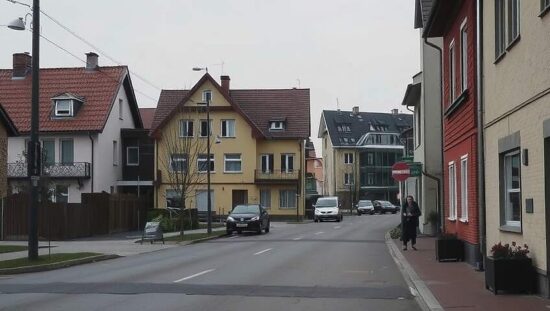The German real estate market continued its upward trajectory in the third quarter of 2025, defying expectations of a slowdown and raising concerns about affordability and potential instability, according to a report released Monday by the Verband deutscher Pfandbriefbanken (VDP). Overall property prices increased by 3.6% year-on-year, a continuation of the recovery phase observed since the spring of 2024. Quarter-on-quarter, prices edged up by 0.7%.
Residential property remains the dominant driver of this increase, with prices surging 3.8% year-on-year and 0.8% quarter-on-quarter. Multi-family dwellings experienced the most significant rise, a staggering 5.2% year-on-year, outpacing the 2.4% increase seen in owner-occupied housing (single-family homes and apartments). This disparity highlights a potential divergence in market dynamics, suggesting that investor-driven acquisitions of multi-family buildings are disproportionately impacting price inflation.
While VDP CEO Jens Tolckmitt acknowledged that market participants have adjusted to the prevailing conditions, the persistent price escalation raises questions about the sustainability of the trend and its impact on renters and aspiring homeowners. The data reveals a deepening crisis of affordability, fueled by consistent demand, particularly in urban centers. New rental agreements experienced a 3.7% increase year-on-year, exceeding the previous quarter’s rate of 3.5%.
The trend is particularly acute in Germany’s top seven cities – Berlin, Düsseldorf, Frankfurt, Hamburg, Cologne, Munich and Stuttgart – where property prices jumped by an average of 4.6% year-on-year. Notably, Munich recorded the highest increase at 5.3%, while Stuttgart lagged behind at 2.4%, potentially reflecting localized variations in investment patterns and demand.
Commercial property prices also saw increases, albeit at a more moderate pace, rising 2.8% year-on-year, with office properties showing a slightly stronger uptick of 3.0% compared to retail properties at 2.2%. However, the disparity in rental growth between office (3.2%) and retail properties (1.9%) suggests ongoing structural shifts within the commercial sector, potentially exacerbated by evolving consumer behavior and the rise of e-commerce.
Analysts are now questioning whether the apparent “arrangement” between market actors, as described by Tolckmitt, represents a healthy adaptation or a masking of underlying vulnerabilities. The continued escalation of prices, coupled with a decline in returns on properties (particularly for multi-family dwellings), raises concerns that the market may be becoming increasingly detached from fundamental economic realities – a situation that could prompt intervention from policymakers and potentially trigger a future correction. The data underlines the need for careful monitoring and targeted measures to address the growing inequality and ensure stable conditions across the German real estate landscape.





